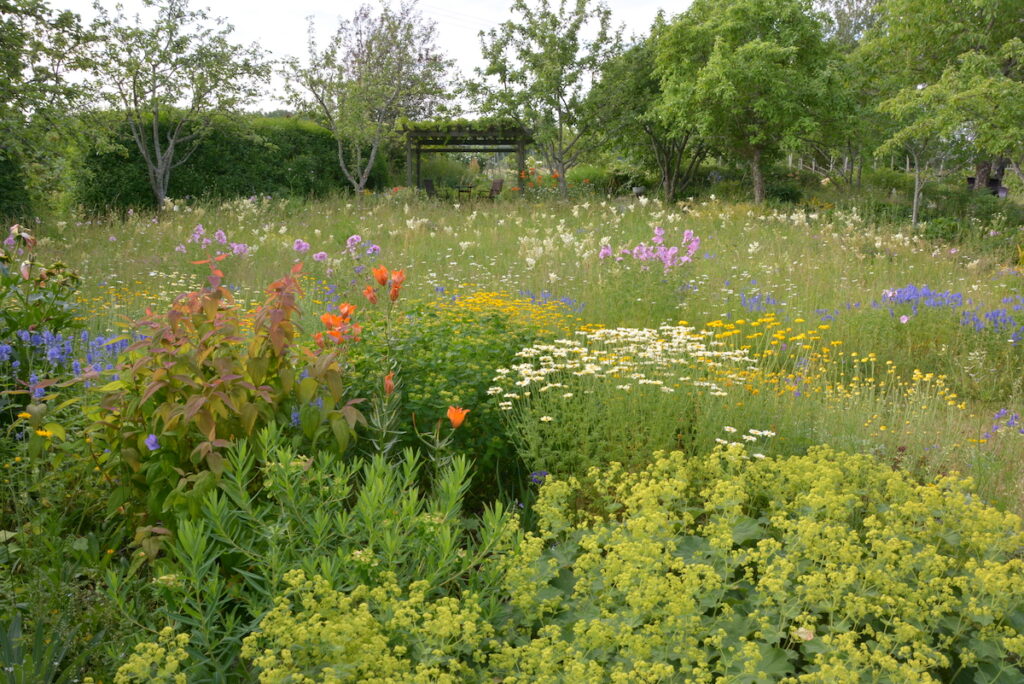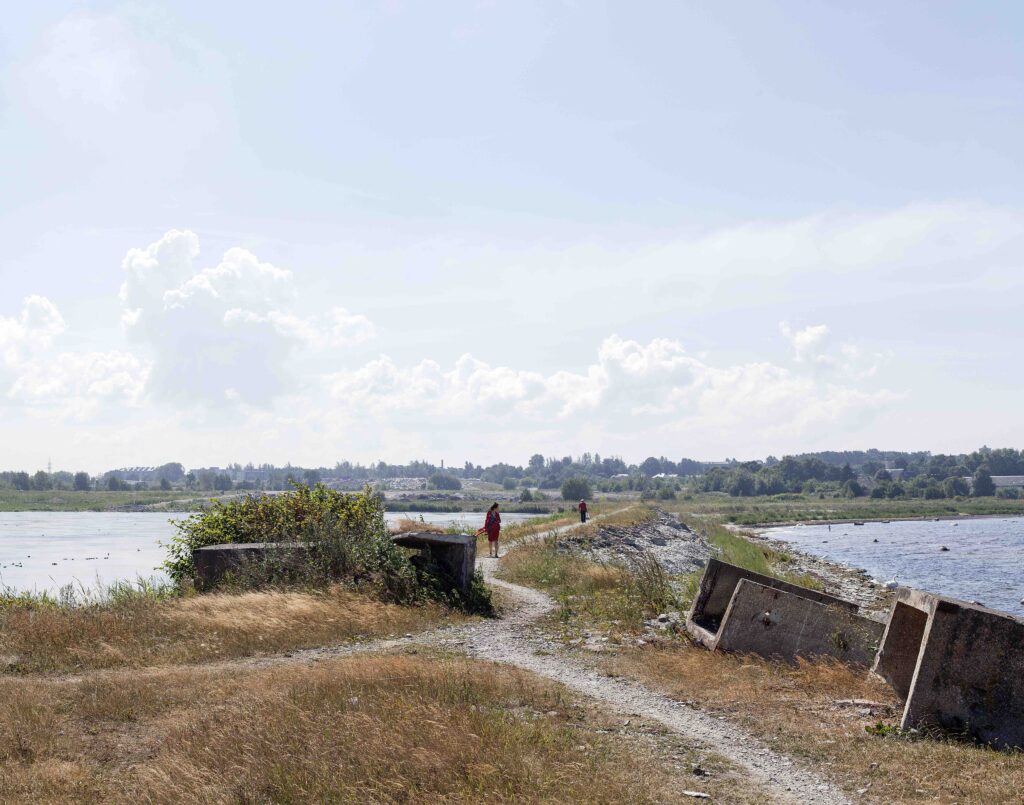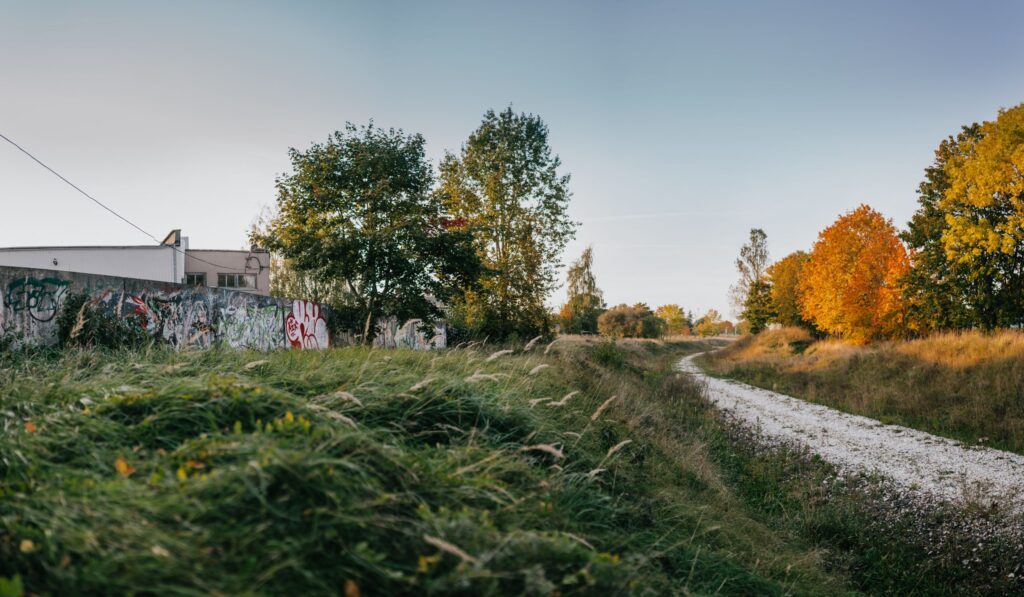(URBAN)LANDSCAPE
The Curated Biodiversity landscape laboratory in Tartu has organised six experiments so far. Running a small operation, we might not be able to change the world at the snap of a finger, but we can start with what we can handle.
A vast majority of Estonians today live in cities and can only dream of such biodiversity that dominates in Kristiina Hellström’s garden and its surroundings. Nevertheless, she is writing about it with the hope that recent country house owners could benefit from her experience.
A weed is a plant considered unwanted in human-controlled settings, such as farm fields, gardens, lawns, and parks. The derogatory term ‘weed’ is also applied to any plant that grows or reproduces aggressively or is invasive outside its native habitat. Invasive species are largely a consequence of human activity: plants and seeds brought by people on purpose or by accident to an area, where they might not have natural competitors and thus will grow unstoppably.
Kõigepealt tuleb arutleda selle üle, mida saab üldse tühermaaks pidada. Kindel on see, et tühermaa on linnalooduse osa, kus inimese mõju on väga selgelt näha ja tunda. Võiks ehk isegi öelda, et tühermaa on inimtekkeline. Seal võib kohata varemeid, lagunenud taristut, ehitusjäätmeid ja muud. Kui püüame sõnastada definitsiooni, siis saame öelda, et tühermaa on inimese kasutatud ala, mis on seisnud aastaid kasutuseta ja mille loodus on aastatega üle võtnud. Kindlat piiri, mis on tühermaa, mis mitte, on siiski üsna raske tõmmata. Tallinna Ülikoolis oleme põhjalikumalt uurinud Lasnamäe tühermaid ja järgnevad suuremad üldistused teen just nende põhjal.
The role of greenery as a climate hero cannot be measured only by the size of green areas or the number of trees. The Green Area Factor is the ability of the plot or area as a whole to balance the built environment’s climate impact.
The objective of landscape architecture should be climate positivity. This will most likely manifest when landscape carbon positivity becomes a sales argument or a general policy, and amendments to legislation are made.
Discussions about how to plan a good city and what kind of buildings to construct are becoming increasingly relevant as mankind has reached a fundamental milestone: the majority of the society lives in cities. At the time of climate change, the issue of a sustainable city is more pressing than ever before also in Estonia, where motorisation is fast and local centres are subjected to urban sprawl. In this context, it is worth recalling the ideological principles of two urban design theories – New Urbanism and Landscape Urbanism – in order to set goals for the kind of space we want to move towards and the pitfalls to avoid on the way.
Against the backdrop of these phenomena, the wasteland paradigm shifted for us: the derelict and polluted areas around the city were like symbols of negative change in the environment with traces og bygone natural habitats or normal human activity, remains of stratified time, soul from different periods of Estonian life.
Last year the Estonian Association of Landscape Architects annual award and the Estonian Cultural Endowment landscape architecture award in the category of architecture were given to the new city centre of Elva. ‘Between the Currant Bushes’ (by Ülle Maiste, Diana Taalfeld, Anne Saarniit, Roomet Helbre, and Taavi Kuningas from the architectural offices AT HOME, NU, ubin pluss, and TEMPT) was recognised as the winner of the architecture competition for the best solution for Elva main street and urban space in the framework of the ‘Good Public Space’ project.
We are discussing landscape architecture with Helēna Gūtmane, Mark Geldof and Ilze Rukšāne online although I initially planned to go there and visit their works together with the authors. In addition to Helēna, Ilze and Mark, also the senior landscape architects Indra Ozoliņa, Mētra Augškāpa and landscape architect Sendija Adītāja joined our discussion around the table (and behind the screen).
Postitused otsas
ARCHITECTURE AWARDS














